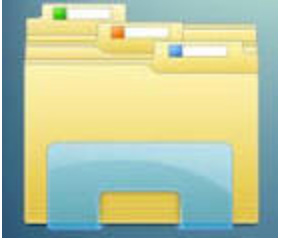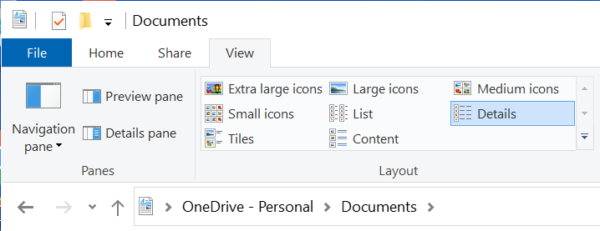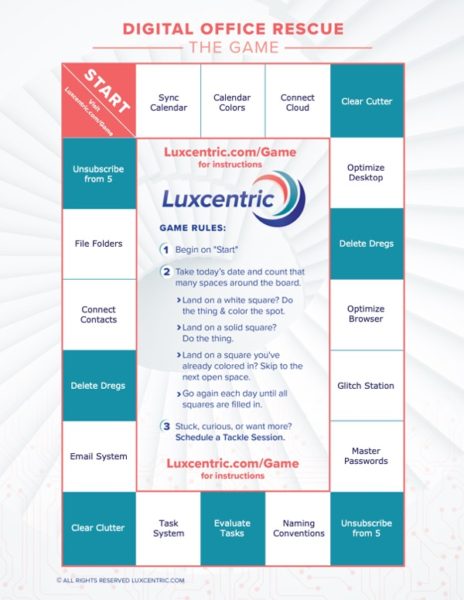Set up File Folders
You need to know where your important files live. Ideally, they should be arranged so you can find things and put things away easily.
Open your Finder (MAC) or File Explorer (PC) to see how your files and folders are visually arranged in your computer.

Finder (MAC)

Windows Explorer (PC)
From the File View Options, (layout) you will find several different ways you can view your files. Feel free to toggle between them so you are comfortable with what they do and how they work.

MAC View

PC View
You can also sort your files in several useful ways. Click on Name, Date, or Size at the top of the list and see how it changes.

Notice how the same information is displayed in different ways. You can set your files to look the way that makes the most sense for the way you work.
Now let’s talk about folder types.
Two types of folders
There are two types of file folders in your computer. They both behave the same way as far as your computer is concerned, but you will have 2 different guidelines to follow depending upon the type of folder with which you are dealing.
Top-level folders
These are the first folders you see when you go to Documents on your computer or to a cloud drive like Google drive, Onedrive or Dropbox.
1. Keep your top-level folders to a minimum (no more than 12)
If you feel you need more folders than that in your system you will need to add sub-folders to your computer file organization. Sub-folders are the 2nd type of folder and will be discussed later. More than 12 folders in top-level position will make it difficult for you to see at-a-glance where your information is located and where to put new content.
2. Name your top-level folders so they stay together at the top of your folder list.
Sometimes your computer will create random top-level folders depending on programs you have on your computer. This is fine, but you want those folders to hang out at the bottom of the list and out of your way.
I share this strategy in greater detail in the GAME SPACE: Choose File Naming Conventions.
3. When you look at your top-level folders it should be obvious what “goes” in them. Give them general names.
Your top-level folders are visual triggers to help you find stuff. They should be created for general categories that cannot easily be confused with your other top-level folders. If you find yourself forgetting “where” to put things it is likely you have too many folders, or their names are too specific.
4. When choosing which folders qualify as your top-level folders consider how often you access them and how much “stuff” is in them.
Some top-level folders do not contain a lot of files but need to be easily accessible because of how often you use them.
5. Do not allow single files to live in the top-level position, this position is only for folders. All files need to be “in” a folder.
Having a variety of files and folders in the top-level position creates visual digital clutter. When you open your computer and see a jumble of files and folders you will subconsciously feel like things are disorganized and needing more attention than you have time for.
6. You retain the power to upgrade and downgrade the folders in your top-level positions.
Pay attention to how often you need to access your specific a top-level folders and don’t hesitate to downgrade a folder if it no longer qualifies for the top spot. The same is true for some of your sub-folders. If you find that you need access to a sub-folder often you can upgrade it to the top level position. Just keep in mind to have no more than 12 top-level folders.
Sub folders
These are folders nested within other folders (top-level folder or other sub folders) to help you better organize your files.
- You generally need a subfolder when you get more than 20 – 50 files within a folder.
- It is ok to have files and folders mixed together within a folder. (top-folder or subfolder)
- Create sub-folders only as you need them.
- Pay attention to how often you need to access a sub-folder and if room permits you can upgrade it to a top-level folder
Steps to Creating or organizing your folder system
STEP 1 Choose or Create your 6 – 12 top level folders
No folders?
If you have no folders when you click on Documents or your favorite cloud drive create these 6 folders to start.
- _FOLDERS TO ORGANIZE
- 1-FINANCE
- 2-BUSINESS
- 3-PERSONAL
- 4-REFERENCE
- zVAULT
Dozens of folders?
You have some extra organizing to do.First, we will need to set up a system for organizing these files and folders. To do this create these 2 Folders.
- _FOLDERS TO ORGANIZE
- zVAULT
Next identify the 6-8 folders you use the most and rename them by adding a number in front of the name so they pop to the top of your list
STEP 2 Put files and folders where they go
Do this as quickly as you can. Do not let yourself overthink this.
Scan your files and folders and move them into either one of your numbered folders, or your new _FOLDERS TO ORGANIZE, or zVAULT folder.
Files and folders that go into _FOLDERS TO ORGANIZE are
- Files and folders you think you need to go through.
- Files and folders that you are unsure about where they should go.
Files and folders that go into zVAULT are
- Folders and files that you know you don’t really use or need, but you don’t want to delete them.
Files and folders that go into one of your numbered folders are
- Folders and files instantly make you think they “should” go into one of your numbered folders. If you are unsure of where a file or folder goes put it in your _FOLDERS TO ORGANIZE
One of the most inspiring things about organizing your files is seeing a tidy top-level. Once your top-level is tidy it is much easier to pick a folder to organize more thoroughly.
A more sophisticated system
Start simple and gradually allow complexity to build.
In the instructions above I recommended four general numbered folders to start. As you evaluated your own folders it is likely that you found some that fit within those general descriptions. Over time you are likely to discover that you need more than one business folder or personal folder. Below are a few folders that often fine their way into the top-level position of a healthy and organized folder system.
_FOLDERS TO ORGANIZE (you can delete this folder once everything is organized as you like it)
1-Financial Receipts and Taxes
Imagine tax time comes around and all you need to do is send a copy of the contents of a single folder to your accountant be done with it. In my system I have a tax sub folder for each year within this folder that hold all my receipts and tax information.
You could also set the current year set as a top-level folder. And then when your taxes are filed you can nest it under 1-finances and start the next year’s folder.
- 1-Finances
- 1-Receipts and taxes 2020)
2-Professional Executive and Administration
This is the stuff that you need to run the back end of your business. This can contain licenses, finances, your business plan, vision documents and Operation manual documents.
When you get to a place in your business where you have staff you may want to separate your executive and your administration into 2 primary folders. One you keep private for yourself and one you share with your staff.
2-Professional Marketing & Services
This is for all the things that you need to promote your business. Your social media, your images, marketing copy.
This is also for the products and programs you offer. You can create sub folders, one for products and one for marketing, or you can promote the 2 into their own primary folders.
As a content creator I put all my blog post drafts, memes, and promotion copy in this folder.
2-Clients and Contacts
Depending on your type of business you may gather information for your clients and need a neat and tidy way to keep it all together and easy to find. You can create a folder or document for each of your clients with all the information you need to serve them.
I generally start with a template document for everyone I chat with in a consultation. That document can just hang out in this folder titled with the contacts name. Once they become a client and I gather more information I may create a folder with their name on it and keep everything within it. I do not share these files and folders with my clients. Shared folders are handled differently.
3-Pictures
The organization of pictures is a never-ending struggle. The scheme I follow is to allow my pictures to be captured from my smart phone into the Onedrive or Dropbox app and connected to my computer. Every week I take the photos that collect in the camera role and file them into the appropriate month folder within this 3-Pictures folder I have created.
- 3-Pictures
- 2020 Pictures
- 2020-01 January Pictures
- 2020-02 February Pictures
- 2020-03 March Pictures
- 2020 Pictures
3-Personal
Personal stuff is so varied that it falls into the category of “I know it when I see it”
4-Reference or Miscellaneous
No matter how organized you try to be, there always seems to be a need for a miscellaneous folder. This is good for backups and other odds and ends.
zVAULT
You may have things the you are not ready to delete, but you feel like they are cluttering your other things. You can create an Vault folder for those sorts of things. Note the little “z” puts them at the bottom or your file list when you sort by name. You can also create zVAULT folders as subfolders when you need to clear away old things within those folders.
STEP 3 Set a rhythm to evaluate your files
Go through your files on a regular basis to make sure you are putting things where they go. As you work on your filing system you will discover that you need to shift and change things. Certain names that you previously chose won’t make sense anymore.
You will also discover that you need more sub-folders and you will find that you can combine folders.
Over time some folders will become more important and can be promoted to a higher spot in your system and others will need to be demoted.
This is all normal in the land of file organization.
Good Luck,
Nicole
Resources Associated with This Game Space:
P.S. If you are ready for the next Game Space check-out: Choose File Naming Conventions.


Nicole Lux-Ritchie - Founder of Luxcentric
Nicole's mission is to help feminine professionals gain the technical
skills they need to grow their business and focus on their missions.
The focus of Luxcentric is on training practical strategies in the area of the core technologies.
EMAIL - FILES - CALENDARS - CONTACTS
For those of you who find this information useful and would like to contribute to the cause (and keep it ad free)...
Your mission, should you choose to accept it,
is to Rescue your Digital Office.

In this regular* email dispatch, you will receive the guidance you need to Rescue your Digital Office!
*about every other week


